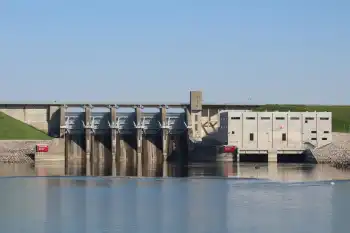Areva to supply 80 turbines for offshore wind farm
By Industrial Info Resources
Protective Relay Training - Basic
Our customized live online or in‑person group training can be delivered to your staff at your location.

- Live Online
- 12 hours Instructor-led
- Group Training Available
The agreement covers the supply of 80 wind turbines, each with a power-generating capacity of 5 megawatts (MW), to the Global Tech-1 windfarm in the North Sea.
The $933 million order covers the supply, commissioning, testing and maintenance of the wind turbines, with delivery scheduled for 2011-12 and an option for the delivery of more wind turbines if required. The foundations, transportation and erection of the wind turbines offshore are not included in the terms of the contract.
Wetfeet was formed specifically to develop the Global Tech-1 windfarm. The company is partly owned by the German municipal companies HEAG Sudhessische Energi AB and Stadtwerke Munchen GmBH, which have equal shares of 24.9% each. Other interested parties include Norderland Projekt GmbH and FC Holding GmbH, each with a stake of 20.1%. The remaining 10% is held by a private enterprise in southern Germany.
At present, 19 offshore windfarms have been approved for development in the North Sea off the coast of Germany. Global Tech-1 is located about 90 kilometers from the coast in the area designated as Borkum West II. Upon completion, the windfarm is expected to have a generating capacity of 1.4 billion kilowatt-hours per year.
Multibrid was formed in 2000 and has since worked on the development of the 5-MW turbine, known as the M5000. The company is affiliated with Prokon Nord Energiesysteme GmbH, whose long-term experience in the development of windfarms will prove beneficial to the Global Tech-1 project.
The M5000 has been designed to meet specific requirements for operating in an offshore environment. The major demands of reliability and low weight have been achieved by reducing the number of rotating components, duplicating key parts and manufacturing the rotor blades from a combination of glass and carbon-fiber-reinforced plastic.
The three-bladed rotor of the turbine has a diameter of 116 meters and is designed to operate in wind speeds in the range of 4-25 meters per second. Maximum power is produced at wind speeds in excess of 10 meters per second. This makes it ideal for operation in the proposed location, which has an average annual wind speed of 10 meters per second at a height of 80 meters above sea level.
Each blade is independently controlled by a system that is fully enclosed within the rotor hub. Each rotor blade weighs 16.5 tons, while the hub is slightly more than 60 tons and the nacelle assembly is 199.3 tons. The relatively low weight of the nacelle assembly allows for lower-cost foundations and simplifies the lifting and installation of the assembly on the top of the supporting tower.
The stator component of the permanent magnet synchronous generator has been designed directly into the main frame, and the rotor has been fitted to the output shaft of the gearbox. Multibrid has thus eliminated the requirement for extra bearings, reducing the overall complexity of the generator/converter assembly.
With the use of permanent magnets in the generator, the unit is able to perform at peak efficiency under normal as well as low-load conditions. The complete generator and gearbox set is cooled by air drawn into the assembly through a multi-stage treatment facility, which ensures that all potentially corrosive salt and moisture are removed before the cleaned air is blown into the assembly.











